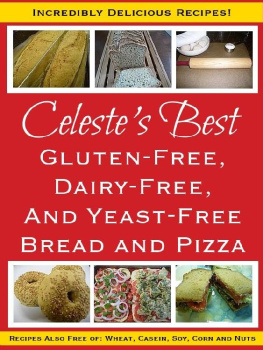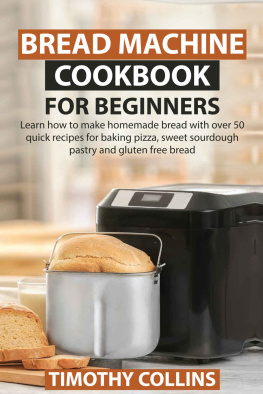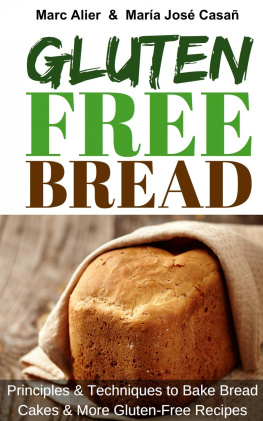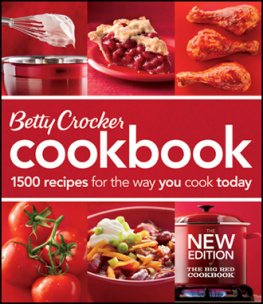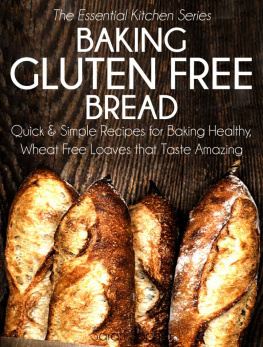Table of Contents

Gluten-Free, Dairy-Free
Bread and Pizza Recipes
Recipes also Wheat-Free, Casein-Free, Corn-Free, Soy-Free, Nut-Free and Yeast Free

Gluten-Free, Dairy-Free
Bread and Pizza Recipes
Recipes also Wheat-Free, Casein-Free, Corn-Free, Soy-Free, Nut-Free and Yeast Free
Copyright 2013
Last Updated 6/1/13
All Rights Reserved
Luminary Publications
This book is protected under the copyright laws of the United States of America. All rights reserved. No part of this publication may be reproduced, stored in retrieval system, copied in any form or by any means, electronic, mechanical, photocopying, recording or otherwise transmitted without written permission from the publisher.
INTRODUCTION
If someone had asked me ten years ago what gluten was, Im not sure I would have known other than the fact that I thought you needed it to make bread. But then my nephew Anthony became ill. He was five years old, weighed a mere 28 pounds and had been diagnosed with failure to thrive. It was a long road that led to discovering the cause of his illness and his delay in growth. Fortunately, my brother Tony and my sister-in-law Susan were finally able to find a doctor who recognized that all my nephews symptoms could be attributed to celiac disease.
Celiac disease (also known as celiac sprue or gluten-sensitive enteropathy) is an autoimmune disease which affects the digestive system. Its estimated that 1 in every 133 people have celiac disease. When people with celiac disease eat foods or use products containing gluten, their immune system responds by developing antibodies. These antibodies often damage or destroy the villi the tiny, finger-like protrusions lining the small intestine. Villi normally allow basic nutrients such as proteins, fats, vitamins, and minerals from food to be absorbed through the walls of the small intestine into the bloodstream. When the villi are damaged, a person becomes malnourished, no matter how much food he or she may eat. And understanding this, clearly explained why my nephew had failure to thrive. He was eating what would be considered by most to be a healthy diet, but his body was unable to break down the gluten protein and he couldnt gain the proper nourishment from any of the food he ate.
At the same time my nephew was diagnosed with celiac disease, my daughter Kelly was diagnosed with Candida, yeast overgrowth in her body. The best treatment for this was a change in diet. That meant removing wheat, milk and sugar from our diet. We maintained this way of eating for almost a year, then when she was well, we slowly resumed our normal diet again.
But when we began adding wheat, milk and sugar back into our diet, for the first time in my daughters life I think, she told us she was not hungry for dinner. She would skip dinner, then later in the night shed become very hungry and would try to eat a little something, only to feel sick to her stomach again. This lasted for almost two weeks. After the second week of this, we decided to have her tested for celiac disease. I knew the genetics of the celiac condition and that there was a strong possibility Kelly might also have the disease since her cousin had already been diagnosed with it. The prevalence of developing celiac disease if you have a second-degree relative (aunt, uncle, and cousins) diagnosed with celiac disease increases to 1 in 39.
We had her tested through Dr. Fine at Entero Lab because this was the most sensitive and least invasive testing we could find. The results - Kelly tested positive for sensitivity to gluten, milk, egg yolk and yeast. We also discovered that she had two genes for celiac disease, one shed received from me and the other from her father. Later we came to find out that Candida may be a catalyst that triggers the onset of celiac disease.
From that point on, we, as a family, all began following a gluten-free, milk-free, yeast- free and egg yolk free diet. And once these foods were removed from our diets, my husband and I quickly realized once we ate the offending foods again that we could not tolerate some of these foods either and so we began strictly following the diet as well.
Having been on a wheat-free diet for almost a year, you would have thought making the transition to a gluten-free diet would have been easy.
Nope. Not even close.
Instead, I was completely overwhelmed and the rest of my life was put on hold as I tried to figure this all out. Being wheat-free and gluten-free are very different. To our surprise, we found that gluten was hidden in so many processed foods.
I remember being especially thankful for my sister-in-law Susan, my nephew Anthonys mother, and all the insightful advice she lent my way to help get me started. I was also thankful for the Internet which allowed me to find ideas and information from other people who had been diagnosed with the disease or had children who had celiac.
And I realize now probably what caused me the most difficulty in those early days was the pressure I put on myself to make my house completely gluten-free and allergen-free very quickly. I tried, believe me I tried. But it really took months for me to figure this all out and to truly say my house was gluten and allergen-free.
When I first began gluten-free cooking, I used a very basic gluten-free flour mix as a substitute for wheat flour. A combination of brown rice flour, tapioca starch and potato starch. This basic mix allowed me to bake again. We were still learning so much about gluten-free living and back then, nearly ten years ago, almost all of the gluten-free flours we used could only be obtained online. Thankfully things have changed so much now!
Although I was baking again, the gluten-free food didnt really taste or have the same texture as the foods we used to enjoy. And we had a long running joke in our family that whenever I baked something the best comment we could muster was, Not bad. Never a Wow! or even a Mmmm, just the lackluster, Not bad.
Trying to overcome this stigma regarding my gluten-free baking, I ordered a special gluten-free flour mix I found online from a company in California. This not only cost an incredible $10 for a three-pound bag, but it also had the added expense of shipping costs. Not very economical or practical Id have to say, but something good came from that experience. For the first time we had a taste of a flour mix that produced soft, appetizing baked cakes and cookies.
I realized then that I had let myself believe the myth that gluten-free foods would always taste inferior to gluten filled foods. But now that I had seen a glimpse of what was possible I decided that I wasnt going to settle for foods that tasted any different than those we ate before my daughter was diagnosed with celiac disease and the other food intolerances. So for the next few years, I worked on developing my own flour mix.
Testing and retesting. Mixing and remixing.
Then something crazy happened.
I made a loaf of Irish soda cake to take to a function and a few people asked me for the recipe. I gave it to them and substituted flour for my mix. Oddly, they asked for the recipe for my flour mix. At the time, I have to admit, I brushed it off and attributed it to them just being kind.
A while after this, my daughter had a holiday party at our house and I baked up some cakes and cookies for the event. The moms who came loved my sugar cookies. They told me my cookies tasted better than those made with wheat flour and again I was asked for the recipe for my mix.
Next page
